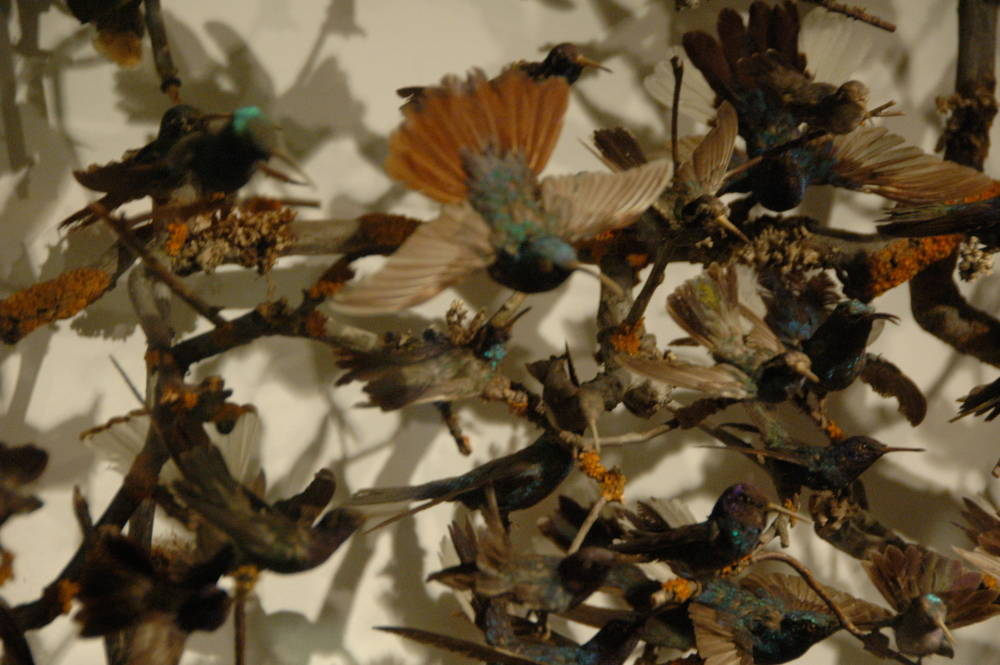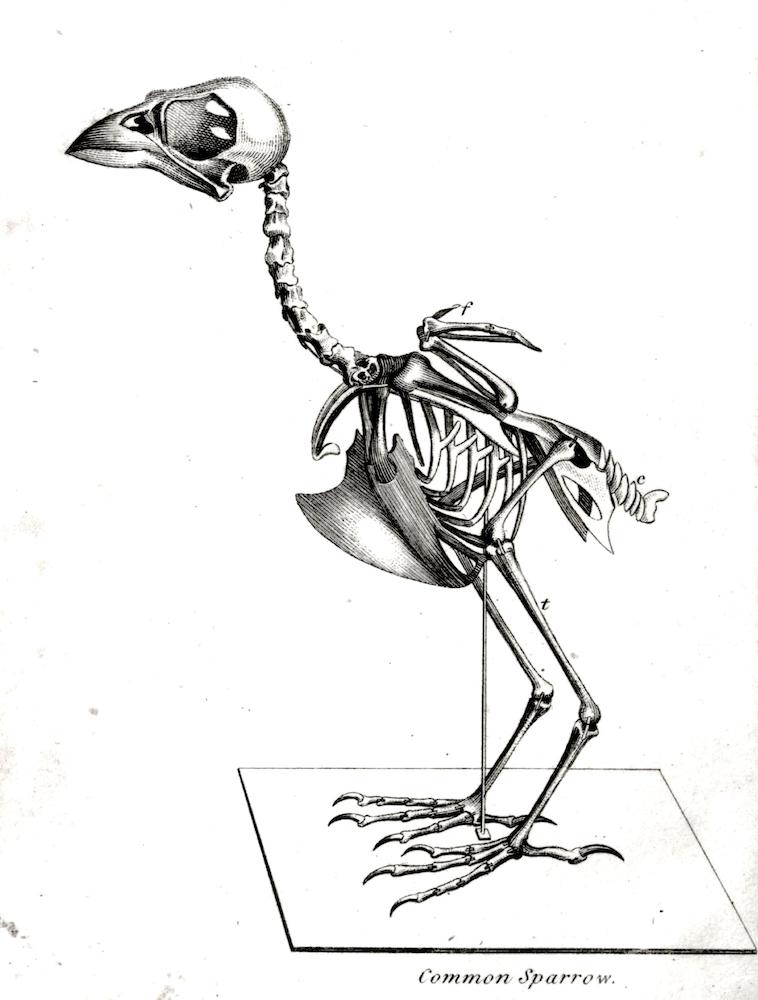Collecting and preserving


Left: Displays of natural history in the McManus, Dundee (photograph by the author). Right: Birds in a leafy natural context at the National History Museum, London. [Click on these and the following images to enlarge them, and for more information about them where available.]
From every point of view, natural history was hugely important in the nineteenth century. The world had opened up, offering vast new territories for the adventurous to visit, explore and study. The most famous of all "gentleman naturalists" was Charles Darwin, whose forays from HMS Beagle gave him the first inklings of the evolutionary process. Alfred Russel Wallace, on scientific expeditions of his own, noted the way different animals adapted to their environments. Others, sent out to far-flung colonies as the empire expanded, were fascinated by the local fauna and fauna: alongside his administrative work and reformist efforts in India, A. O. Hume became the leading authority on the subcontinent's bird life. Explorers on geographical expeditions also encountered and noted new species: before embarking on her two trips to Africa, Mary Kingsley kitted herself out with the equipment she needed to collect strange insects, fish, and so on. One of her legacies was the discovery of some new species, such as the African fish named after her: Ctenopoma Kingsleyae or Tailspot Ctenopoma.



Left to right: (a) A furnished space in the Booth Museum of Natural History in Brighton, recreating the atmosphere of a late Victorian drawing-room with specimens in glass cages. (b) "Natural History," 1867: caricaturist Edward Griset satirizes people gawping at a giraffe exhibit at a natural history museum. (c) Bone structure of the Common Sparrow, in Taxidermy, Plate II.
Meanwhile, working with Darwin's specimens at home, George Robert Waterhouse, curator of the London Zoological Society’s museum from 1836 to 1843, identified and catalogued this exciting haul. Collecting and displaying curiosities had long been a gentlemanly pursuit, and with this new influx from different continents came the founding of museums to share the discoveries with the wider public. A variety of dead insects, animal skeletons, and stuffed specimens could be both enjoyed and studied at close quarters. Ranging from humble local museums, like the Booth Museum in Brighton, which opened in 1874, to the splendid Natural History Museum in London, which opened in 1881, these large new "cabinets of curiosities" allowed visitors to get close to the rarest of creatures, and observe their bone structure, plumage, fur and so on. Taxidermists had good business. In fact, "By 1880, every town in England could support a part-time taxidermist" (Milgram 169). Of particular interest was the new move towards the "habitat diorama" (Ayres 166), which aimed to show what the specimens would (or would have) looked like in their natural context.
Observing
During his career, George Waterhouse also meticulously recorded animal behaviour. Among his discoveries were new types of bats, otters and deer. Once London Zoo was opened in 1847, people flocked to see examples of the living creatures: Edward Lear went to study and draw its parrots, and Rossetti went to see the wombats, eventually deciding that he must have one as a pet. The animals' unique characteristics could be seen in action here — the way the electric eel stunned small live fish at feeding time, perhaps (see Cornish 53-54), or the way tigers' sleeping postures differed from cats' (Cornish 67-68). This was entertaining, but educational too, although even here the animals were not seen in their true environment. As Stephen Jay Gould points out in connection with taxonomy, "Many species owe their distinction to genetic and behavioural features that maintain the cohesion of a population in nature, but may not be preserved in museum specimens" (38) — or indeed, in zoos.

Law of Authority, by George Thomas. A girl, observing intently the bee on the window-frame, listens to her brother explaining the workings of the beehive. Source: Gatty 6.
Another (or additional) option was offered: the study of natural history in the local environment. Writers and educationists, having inherited the Romantic view of nature, made special efforts to target those particularly deprived of it in their daily lives — the newly literate working classes, and a whole generation of children growing up in a recently urbanised society. They promoted its moral value, as Wordsworth had done in "The Tables Turned":
One impulse from a vernal wood
May teach you more of man,
Of moral evil and of good,
Than all the sages can.
To many, from the Evangelicals to the Muscular Christians, nature was also a revelation of God, and a guide to human nature and behaviour. One of Margaret Gatty's Parables from Nature, "The Law of Authority and Obedience," uses the workings of the beehive to establish the need for leadership and promote stability in society: "The instincts of nature confirm the reasoning conclusions of man" (15). Charles Kingsley also urged his readers to observe nature closely, presenting it to children as "the most beautiful and most wonderful of all picture-books, which is simply all things which you can see, hear, and touch, from the sun and stars above your head to the mosses and insects at your feet" (xii). Arabella Buckley had a similar message. Nature rambles were an activity in which people of all ages and classes could participate, whether close to home or on outings — a viable alternative now that train travel made coast and countryside more accessible. The great advantage here was that of studying creatures in their normal habitats, whether on a rocky shore, a local river, a common, or even in a garden or allotment.
Related Material
- The Victorians and Animals: An Introduction
- Part I: Animals as Part of the Household
- Part II: Animals in Entertainment
- Part IV: Working Animals
- Part V: Animal Rescue
- Nineteenth-Century Popularisers of Natural Science (sitemap)
- Charles Darwin: Gentleman Naturalist
- Beauties in Bell Jars: A Review of John Whitenight's Under Glass: A Victorian Obsession (Review by George Landow)
- Victorian Natural History Museums and the Display of Knowledge
Bibliography
[Anon.] Taxidermy: or, the art of collecting, preparing,and mounting objects of natural histroy for the use of museums and travellers. London: Longman, 1820. Internet Archive, from a copy in the Biodiversity Heritage Library, University of California. Web. 12 October 2020.
Ayres, Brenda. Victorians and Their Animals: Beast on a Leash. London: Routledge, 2019.
Cornish, C. J. Life at the Zoo; Notes and Traditions of the Regent's Park Gardens. London: Seeley & Co., 1895. Internet Archive, from a copy in the Smithsonian. Web. 12 October 2020.
Gatty, Margaret. Parables from Nature. London: Bell & Daldy, 1861. Internet Archive, from a copy in the Thomas Fisher Library, University of Toronto. Web. 12 October 2020.
Gould, Stephen Jay. I have Landed: The End of a Beginning in Natural History. Cambridge< Mass.: Harvard University Press, 2001.
Kingsley, Charles. Madam How and Lady Why, or First Lessons in Earth Lore for Children. New York: Macmillan, 1885. Internet Archive, from a copy in University of Michigan Library. 12 October 2020.
Milgram, Melissa. Still Life: Adventures in Taxidermy. Houghton Mifflin Harcourt, 2011.
Created 12 October 2020; last modified 18 May 2023